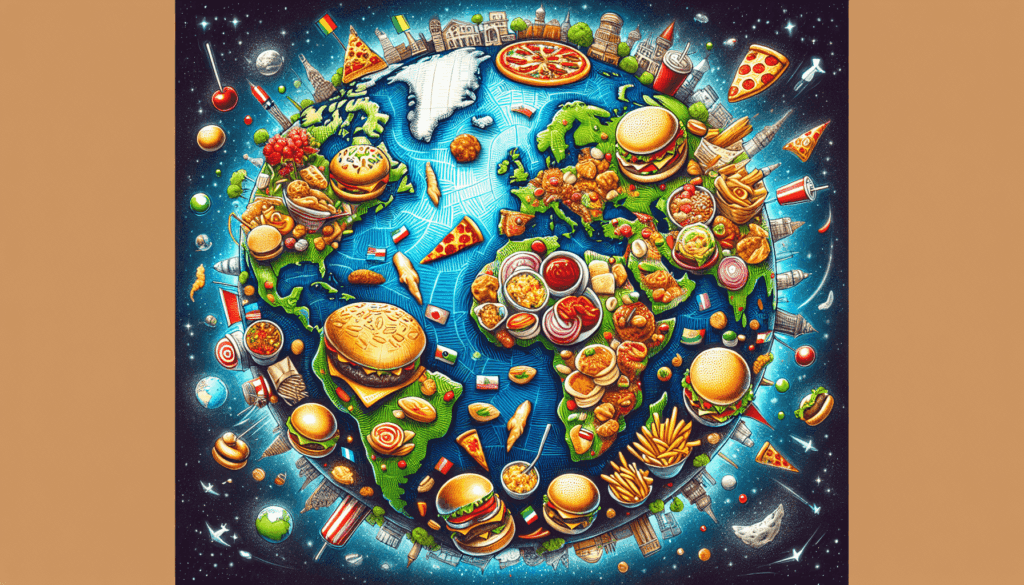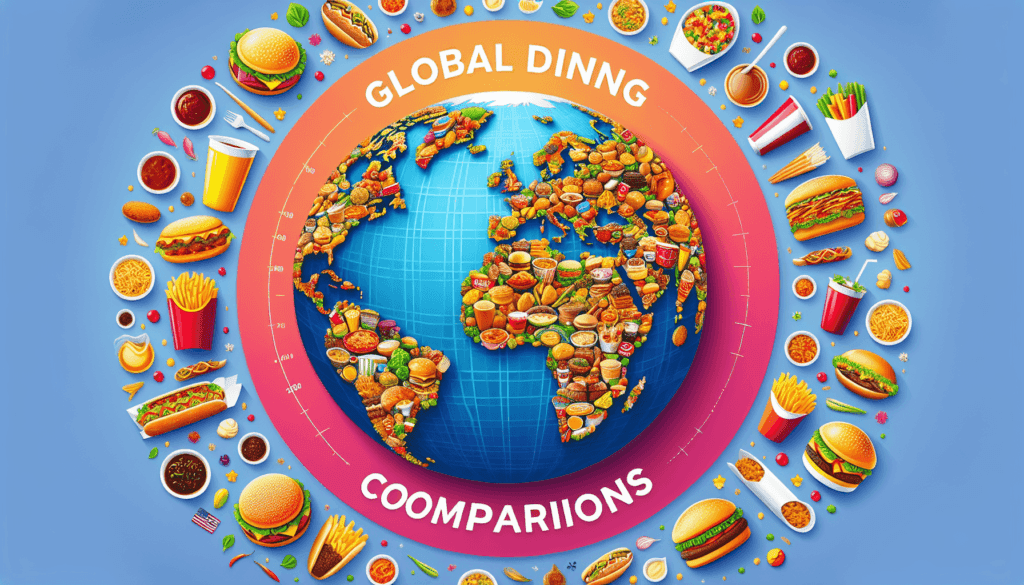Have you ever wondered why your favorite fast-food burger tastes different in Paris than it does in New York? If you’ve traveled abroad and visited global chain restaurants, you might have experienced that not everything tastes the same as it does at home. This discrepancy can perplex and intrigue those who seek the familiar comfort of international dining experiences. But why is this the case?
Before we dive into that whirlwind pizza of factors affecting the taste and feel of your go-to meals abroad, let’s pull back the curtain and take a detailed look at what makes comparing global chain restaurants a bit of a culinary adventure.

Table of Contents
Origins and Evolution of Global Chain Restaurants
A Brief History
Fast-food chains, such as McDonald’s and KFC, started as humble family-owned businesses and transformed into massive global empires. The McDonald’s story, which began with the McDonald brothers in the 1940s in California, set the stage for a dining revolution. Their efficient and innovative approach to the quick-service model quickly became a blueprint for others, giving birth to what we recognize as today’s fast-food industry.
The Global Spread
As these chains proliferated beyond their homeland of invention, they adapted to fit into the diverse puzzle pieces that make up world culinary cultures. The spread of fast-food culture didn’t just involve opening shops in new locations; it involved embedding themselves within different societal contexts, recognizing the taste preferences and dietary customs that vary wildly across regions.
Local Adaptation: Navigating the Cultural Palette
International Menus and Local Tastes
One main driver of the divergence in taste is adaptation to local taste preferences. For instance, McDonald’s in India offers a plethora of vegetarian options that cater to dietary norms prevalent in the region, such as the McAloo Tikki burger, which you won’t find in most Western countries. This reflects a broader trend—what’s on offer at a global chain abroad might seem unrecognizable, although it’s ultimately tailored for local palates.
Ingredients and Sourcing
The source of ingredients also plays a crucial role. Availability and regulatory standards in different countries force chains to source ingredients locally, which naturally results in flavor variations. For instance, a cheese burger in France likely uses locally sourced cheese, which can taste extravagantly different from its American counterpart due to processing differences.
Marketing and Cultural Nuances
Beyond the menu, how chain restaurants position themselves within a market can also vastly differ. In Japan, for instance, fast food is often marketed as a family dining experience, which contrasts with the “grab-and-go” approach seen in the U.S. Understanding these cultural nuances is key to understanding why these chains might feel a world apart despite bearing identical logos.

The Role of Regulation and Standards
Health Standards and Food Regulations
Every country has its own set of food safety regulations and quality standards. In some cases, these can impose significant differences on how foods are prepared and processed. With countries like the European nations emphasizing strict organic and non-GMO regulations, fast-food chains must adjust their sourcing and preparation, causing variations in taste and quality.
International Business Operations
Each country brings with it its own set of operational challenges. Labor laws, wage structures, and supply chain logistics are all considerations that can affect how a fast-food chain is able to deliver its services abroad. Moreover, tax regulations and import tariffs can alter cost structures, which may thereby influence menu pricing and available options.
Real-World Insights: Case Studies of Variation
McDonald’s in India vs. USA
In the United States, McDonald’s offerings are vast, with iconic items such as the Big Mac reigning supreme. Yet, in India, the menu is inclined towards vegetarian fare, in respect of dietary preferences and religious considerations. Chicken Mahārāja Mac, anyone? It’s fascinating—and enlightening—to see how one brand name can encapsulate entirely different dining experiences based on geographical location.
Starbucks Japan vs. Starbucks USA
While the core of coffee culture is present, Starbucks in Japan embraces flavors that resonate with Japanese culinary trends, such as matcha. Beyond beverages, the store design and ambiance often pay homage to traditional Japanese aesthetics, merging global coffee culture with local charm.
The Challenges of Direct Comparison
Language and Communication Barriers
Traveling abroad faces us with the reality of linguistic differences which can cause misinterpretations and miscommunications. Menu descriptions, albeit seemingly straightforward, might not fully capture the senses in translation, offering an added layer of complexity to the comparative experience.
Experiential Differences
Measuring the dining experience extends beyond just tasting the food. The service styles, atmosphere, and even the client demographics can greatly impact how one perceives the experience. Understanding these nuanced differences can help better align expectations with reality when stepping into a familiar chain in an unfamiliar city.
Overcoming the Challenges of Comparison
Profitable Global Expansion
For chains, harnessing this puzzle of culinary diversity is key to successful global expansion. Embracing the cultural trends and habits where they plant roots helps them stay relevant and maintain profitability, as opposed to imposing a one-size-fits-all strategy on a location.
Appreciating Differences
As consumers, starting with an appreciation for unique cultural identities can elevate your dining adventure. Each variation is part of a country’s gastronomic DNA, and what better way to experience a new place than through its interpretation of a familiar dish?
Future Implications and Conclusion
Trends in Global Culinary Interactions
The fast-paced world and increasing connectedness make food trends more transient than ever. Sustainability concerns, technological advancements, and deeper cultural integrations create new dynamics and challenges for global chains.
The Ever-Evolving Story
While it can be tempting to seek the familiar when standing in foreign locales, embracing the unpredictable journey of culinary discovery can lead to the best stories. Like a tapestry woven of familiar patterns sewn with threads of adventure, global chain restaurants reflect cultural fusion and local identity.
As you continue on your travels, attempting to seek the comforting consistency that brands promise, you’ll find the excitement lies in your sensory exploration. Have you encountered any surprising fast-food experiences abroad that broke the mold for you? Share your story and enrich your own tapestry of experiences!
Why do people travel to different countries and then eat at American chain restaurants?
